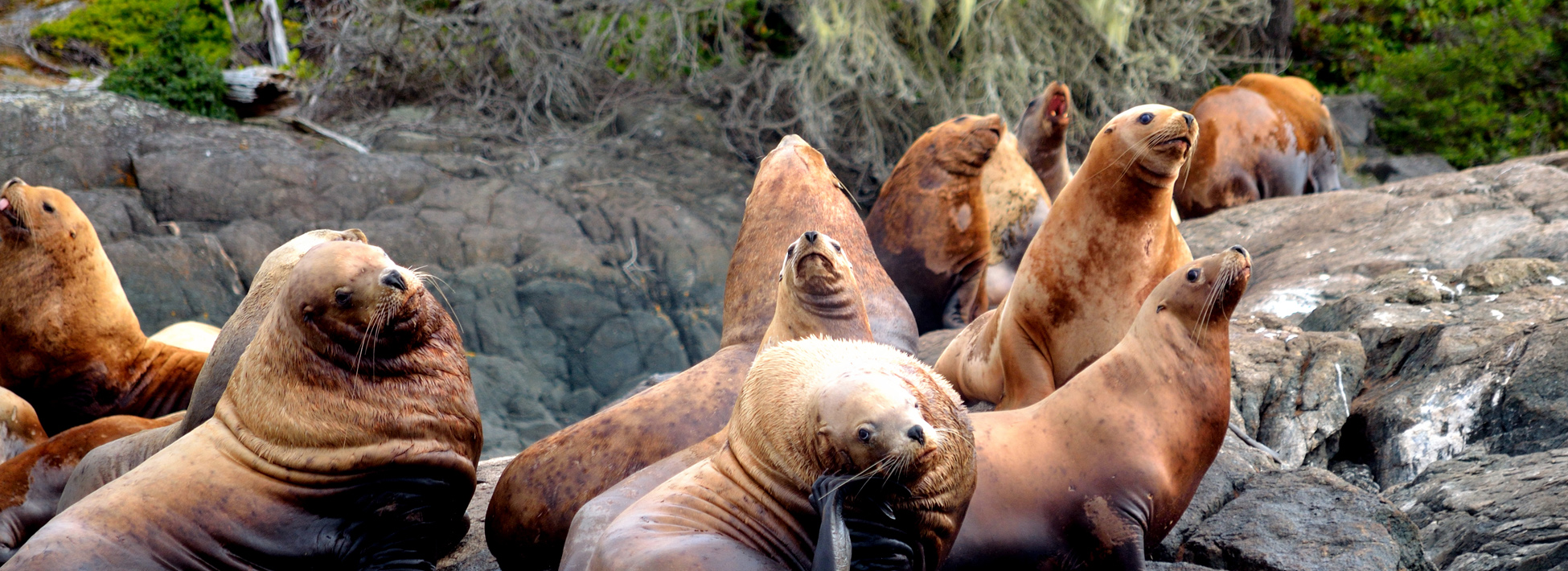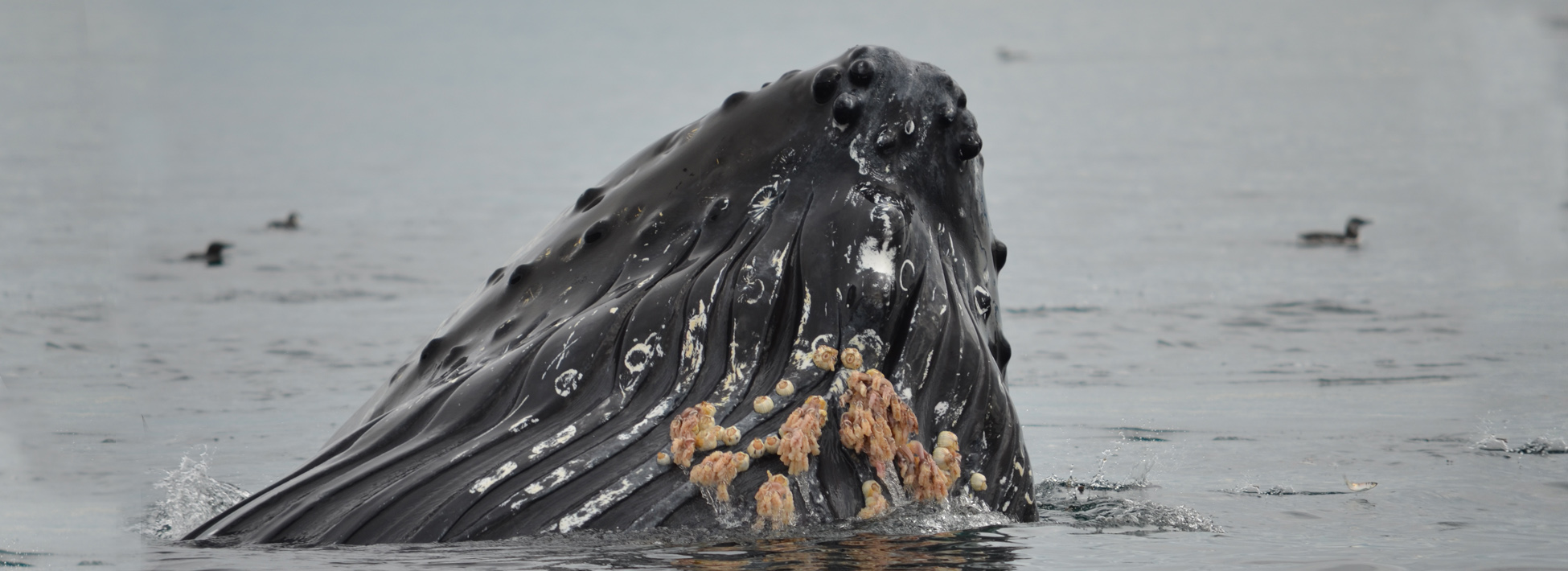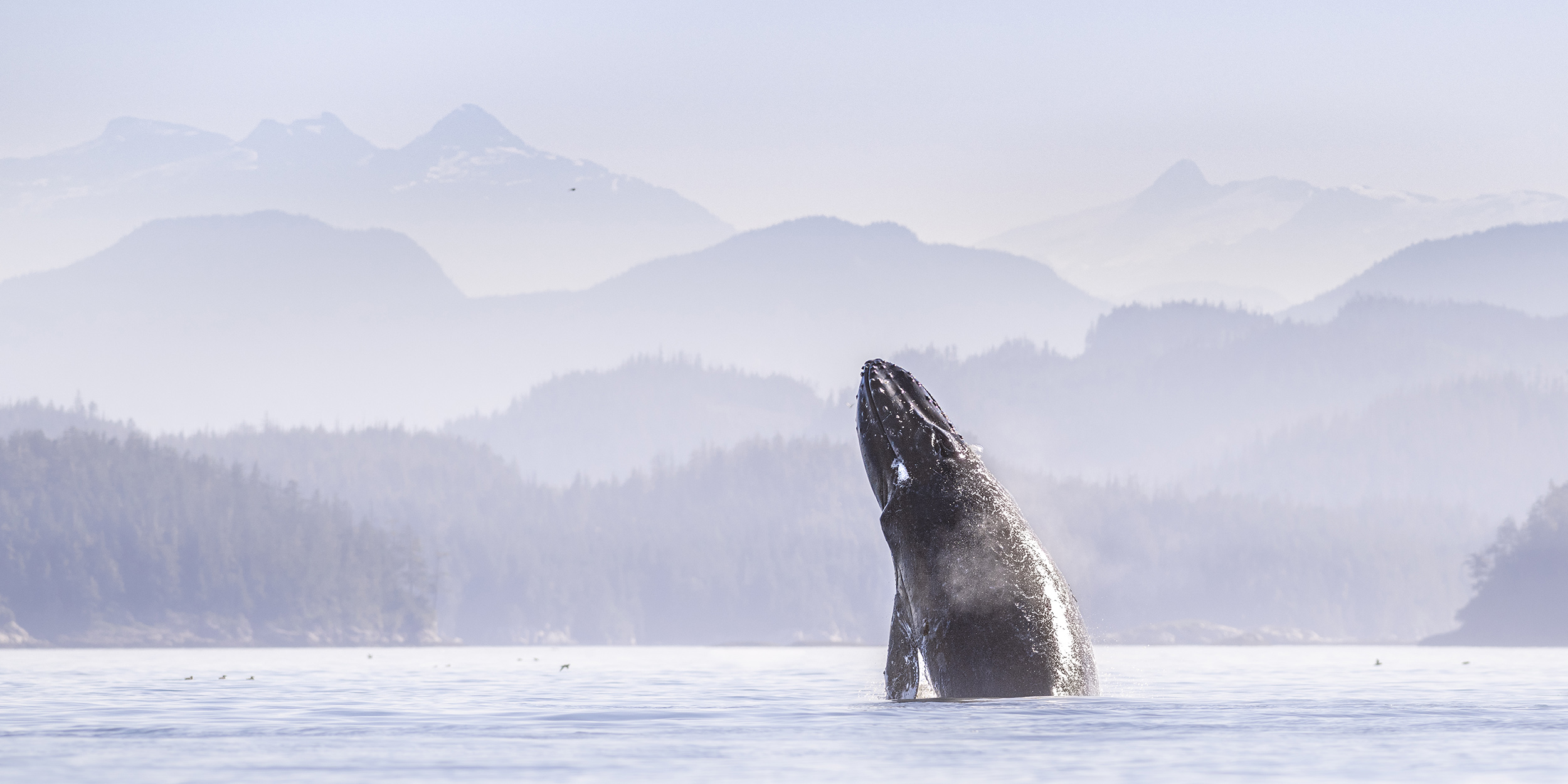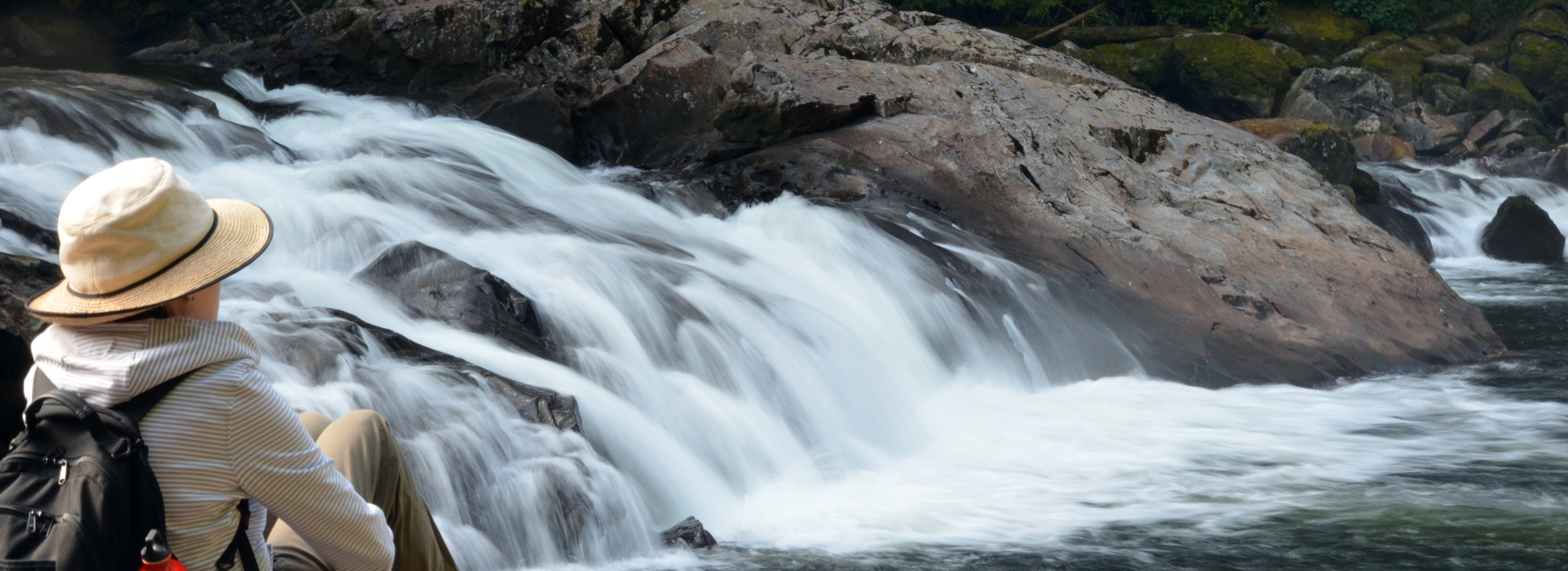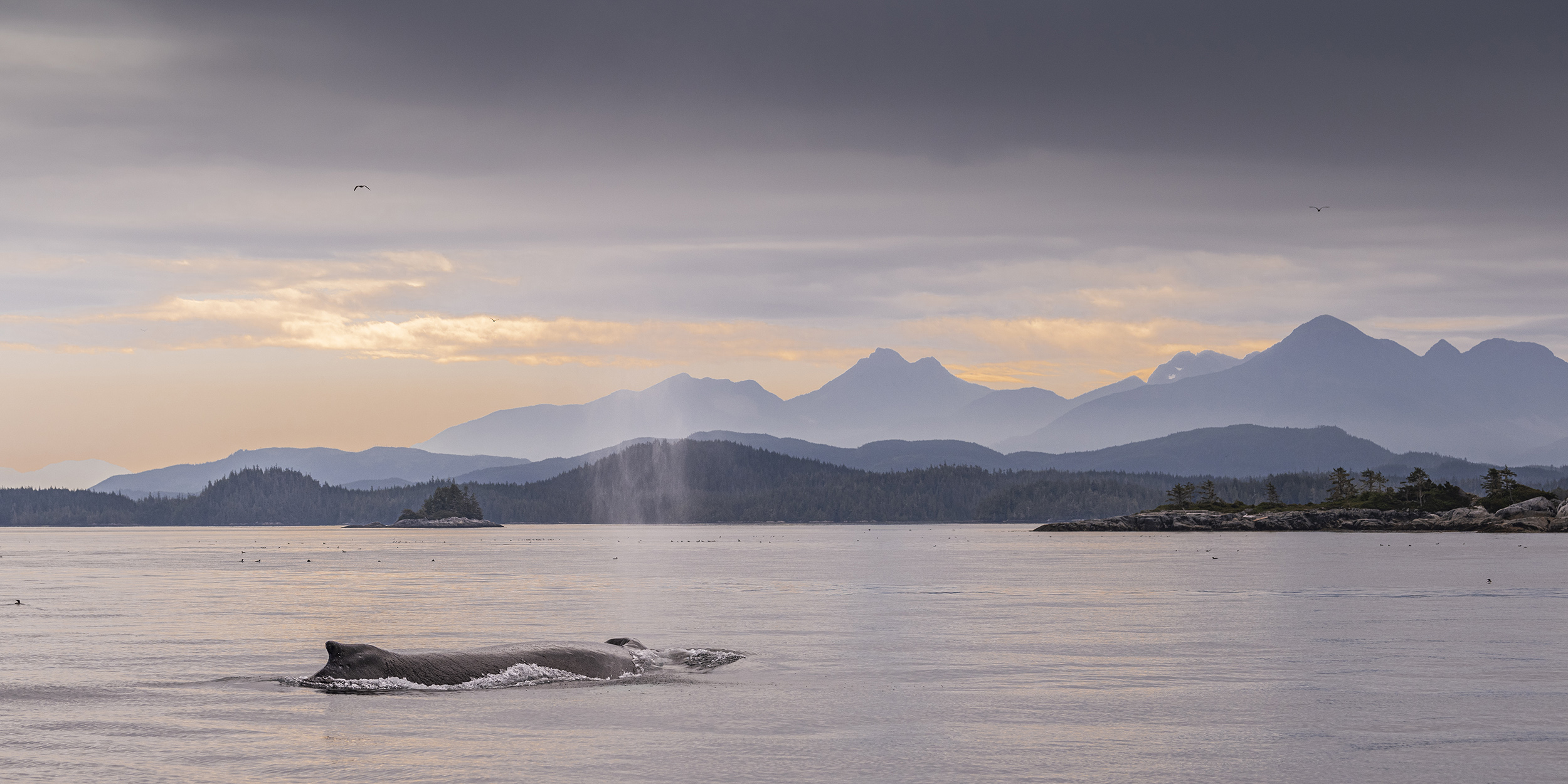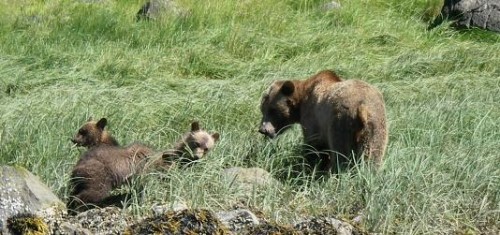
Spring grizzly bears grazing on the sedge grass in the Glendale River estuary. This mother and cubs were frequent visitors to the estuary because of the protein rich grass and the good beach for rolling rocks for a different protein. Triplets are reasonably common and on occasion a mother with four cubs will pass through our viewing area. The reason the bear population is increasing is the number of births some of which are multiple births and with the abundance of food means most of the cubs survive. It is an interesting circle because when a pregnant bear hibernates if it is in good health (because of lots of food) the eggs are not absorbed and therefore more bears give birth and so on.
